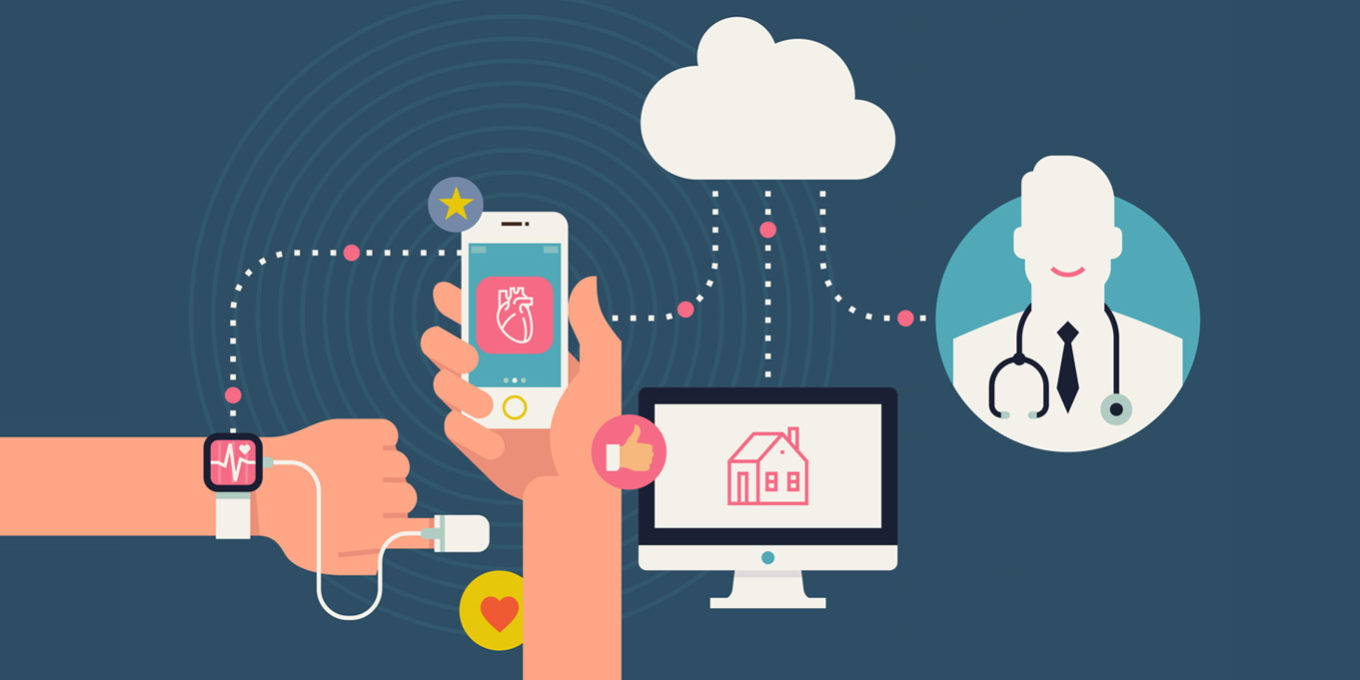IoT (Internet of Things) refers to physical devices that are embedded with the internet technology, enabling them to send and receive data. Currently, IoT is pegged to offer a healthcare system that is more efficient in terms of cost, energy, and time.
IoT has the potential to revolutionize the healthcare industry in the way it operates and delivers. Analysts at MarketResearch.com predict that the sector will be worth $117 million by 2020 as it continues to accelerate consumer engagement with information-driven healthcare provision. Let’s take a closer look at the aspects of this technological advancement and mull over the opportunities and challenges that IoT brings with it.
IoT’s Impact on Healthcare:
IoT has already established a significant role in a variety of applications. On one end, it shows potential in managing chronic diseases while on the other, preventing them.
Non-invasive Monitoring:
The physiological status of patients can be monitored at all times using IoT-driven devices. Sensors that are built into the devices collect comprehensive data and the devices use gateways or cloud to store the data and further send it across wirelessly to patients’ assigned physicians for additional reviewing. Not only does it replace the process of a health professional making regular visits, it automatically provides a continuous flow of information regarding the patient’s well being. Naturally, this results in a higher quality of care whilst reducing costs.
The patients wear activity trackers for up to a week prior to their treatment, followed by months during the course of it. The tracker logs their activity, fatigue, and appetite levels and saves the data on Medidata’s Cloud ePRO app found on their smartphones. Using the gathered day-to-day data, physicians are then able to assign and improve treatment.

Self-Diagnosis & Prevention:
People who are healthy and fit can hugely benefit from IoT driven monitoring too. This can be seen in an array of trackers that exist today, from sleep analysing and coagulation testing to assessing depression and more that help users track their everyday well-being.
An example of this would be IoT being used in the prevention of hazards. Senior living centres are adapting to IoT-led monitoring devices to monitor falls and other potential anomalies upon which emergency triggers and reports are sent to responders and active members of the family.
Advantages of IoT in Healthcare:
- Small Footprint: Low-power operations use extended battery life. Some devices are battery-free and make use of ultra-low-power converters.
- High Accuracy: The integrated sensors are capable of providing highly accurate data.
- Developed UI: A graphic user interface helps deliver a great deal of information in detail with easy accessibility.
- Real-Time Data: Extensive data can be accessed in real time to prevent, diagnose or improve treatment thereby closing the gap between stages.

This is just the beginning of a long-predicted IoT revolution that is already paving its way in the Healthcare industry. Discovery of new applications of this technology are underway and they address the need for affordable and accessible care. Industries worldwide, particularly Health Care, are thrilled and looking forward to riding this radical wave and bettering lives globally.

